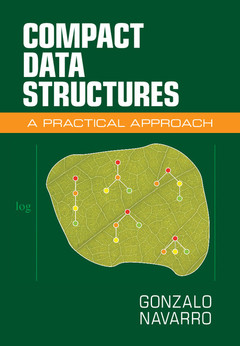Description
Compact Data Structures
A Practical Approach
Author: Navarro Gonzalo
This practical, applications-oriented book describes essential tools for efficiently handling massive amounts of data.
Language: English
Subject for Compact Data Structures:
Approximative price 89.00 €
In Print (Delivery period: 14 days).
Add to cart
Publication date: 09-2016
570 p. · 18.3x26 cm · Hardback
570 p. · 18.3x26 cm · Hardback
Description
/li>Contents
/li>Biography
/li>
Compact data structures help represent data in reduced space while allowing it to be queried, navigated, and operated in compressed form. They are essential tools for efficiently handling massive amounts of data by exploiting the memory hierarchy. They also reduce the resources needed in distributed deployments and make better use of the limited memory in low-end devices. The field has developed rapidly, reaching a level of maturity that allows practitioners and researchers in application areas to benefit from the use of compact data structures. This first comprehensive book on the topic focuses on the structures that are most relevant for practical use. Readers will learn how the structures work, how to choose the right ones for their application scenario, and how to implement them. Researchers and students in the area will find in the book a definitive guide to the state of the art in compact data structures.
1. Introduction; 2. Entropy and coding; 3. Arrays; 4. Bitvectors; 5. Permutations; 6. Sequences; 7. Parentheses; 8. Trees; 9. Graphs; 10. Grids; 11. Texts; 12. Dynamic structures; 13. Recent trends.
Gonzalo Navarro is Professor of Computer Science at the Universidad de Chile. He has directed or participated in numerous large projects on web research, information retrieval, compressed data structures, and bioinformatics. He is a member of the editorial board of the journals Information Retrieval, ACM Journal of Experimental Algorithmics, and Information Systems. His publications include the book Flexible Pattern Matching in Strings (with G. Raffinot, Cambridge, 2008), 20 book chapters, more than 100 journal papers, and almost 200 conference papers. He has also edited the proceedings of seven international conferences.
© 2024 LAVOISIER S.A.S.



